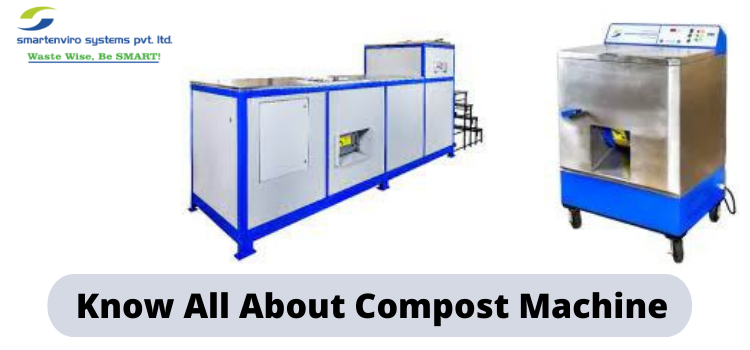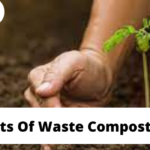Biological, chemical, and mechanical composting operations can be performed using compost machines. Large residuals are mechanically shredded into powder to increase the biological degradation rate of organic waste. Fertilizers can be produced from the composted organic residue.
Let us discuss some questions through this article about the compost machine, which will help us understand it better.
How did the compost machine work?
Step 1. Shredding – To optimize the biodegradation rate, large organic waste residuals are reduced to small pieces using shredding technology. In the mixing and composition segment, shredded waste is automatically transferred.
Step 2. Mixing and Composting – The bioactive compost is blended with the shredded waste. Organic waste is digested by microbes and turned into organic manure. 5-7 days are required for organic manure to dry.
Step 3. Curing – The process of preparing organic manure and using it for gardening.
What are the benefits of compost utilization?
- Enhance soil moisture retention.
- Make heavier soil more airtight and improve its texture.
- The soil’s ability to hold nutrients allows plants to take advantage of them.
- Rainwater does not wash away nutrients from compost.
- What can we compost in the machine?
Coconuts, watermelon shells, corn bases, non-veg bones, and all other biodegradable materials can be used.
What are the steps of the operation for the operator?
Step1. Feeding – Creating a system for segregation of organic waste at the source. Shredder hopper with organic waste being fed.
Step2. Operation -The shredder should be started, and the shredder must complete the shredding process. After shedding ends, the shredder will be put off. The agitator will be stated and run for 30 minutes.
Step3. Collection and curing process – A compost outlet box is opened, and an agitator is started for composting. Waste from the homogenized waste is collected into the box. Waste is dried outside for 10-14 days and then used for agricultural crops as a source of fertilizer.
What is the importance of segregation?
- To prevent public health issues and to improve the health of ragpickers and those handling waste.
- Waste that goes to landfills should be reduced/ landfills should be reduced.
- Creating a cleaner environment by reducing air and water pollution.
- The goal is to lower the cost of recycling and reusing by preventing the contamination of dry and wet waste.
How do we segregate the waste?
Maintain separate containers for dry and wet waste in your kitchen. Clean and dry any plastic in your kitchen, and throw it in the dry trash can. Rinse glass and plastic containers after each use to prevent food from getting on them.
What are the things which cant go into the machine?
In that case, we are speaking of materials that do not decompose naturally, such as paper, plastic, metal, glass, rubber, thermocol, styrofoam, fabric, leather, and rexine.
What kind of machines is available for composting?
Composting machines come in three different types.
- Smart Batch Composter + Curing System, which is manual and semi-automatic
- Smart Drum Composter, which is automatic
- Smart Xpress Composting machines which are automatic
If any non-biodegradable material goes inside the machine?
It is essential to avoid entering non-biodegradable materials. Polythene and plastic paper can become wrapped around blades, mixing arms and shafts of the shredder. Hard metal parts can also become stuck in the blades as well.
Where can it be applicable?
- Hotel
- Hospital
- Industrial canteen
- Marriage hall
- Temple
- Municipal bodies
- Residential complex
What are the factors affecting composting?
To be effective, composting requires a lot of oxygen. That’s why oxygen must be constantly supplied by air circulation during composting. Decomposers of the highest quality need oxygen to function effectively. The air circulation is tremendously enhanced by pilling up massive fertilizer, making pathways for air development, and turning the material to loosen and blend them. If oxygen is lacking, anaerobic decay takes place. There are problems associated with anaerobic decay on a manure heap since it is slower and produces unpleasant odors.
What are wet waste/organic waste and dry waste?
Organic waste applies to biodegradable waste and comes from nature, whether an animal or a plant. Organic waste is usually broken down over time by another organism. There are many types of organic waste, including food waste, soiled paper, non-hazardous wood waste, and landscaping and pruning waste.
Dry waste is waste that is not likely to decay or disintegrate over a period of time. Specifically, dry waste is waste that is not defined as organic biodegradable since it does not contain any food products. Many types of material can be stored for an extended period of time and remain intact without decomposing, such as plastic, metal, glass, rubber, thermocol, styrofoam, fabric, leather, and rexine.
Thus, this article helps to understand most of the things about compost machines and even tries to answer the most frequent questions asked about compost machines.



